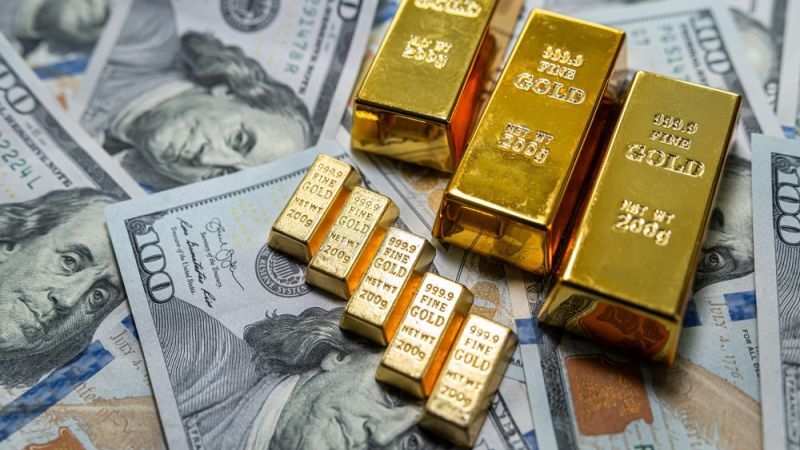Gold prices edged higher for the fourth consecutive session on Monday, as expectations for a U.S. Federal Reserve interest rate cut intensified following disappointing jobs data. The rally was further supported by a weaker U.S. dollar and falling Treasury yields, bolstering investor appetite for safe-haven assets.
Spot gold rose by 0.1% to $3,375.89 per ounce during early trading, while U.S. gold futures climbed by the same margin to $3,430.40. The continued upward momentum follows Friday’s release of lower-than-expected non-farm payroll figures in the United States, which have raised fresh concerns about the strength of the U.S. economy.
The 10-year U.S. Treasury yield, often used as a benchmark for global interest rates, fell to its lowest point in over a month. A declining yield typically makes non-yielding assets like gold more attractive, as investors seek safer stores of value amid economic uncertainty.
“The market is clearly pricing in a September rate cut,” said Ava Tanaka, senior commodity strategist at Goldline Capital. “With the Fed likely to pivot toward easing, gold continues to benefit as a hedge against both inflation and economic instability.”
The U.S. dollar index also slipped to a one-month low, making gold cheaper for holders of other currencies and further fuelling demand. Analysts believe the confluence of a softer dollar and falling yields is creating a favourable environment for precious metals in general.
Among other metals, silver posted a modest gain of 0.1% to reach $37.44 an ounce, while platinum added 0.1% to trade at $1,330.31. Palladium, often used in automotive emissions control devices, rose 0.2% to $1,204.25 per ounce.
Markets are now closely watching upcoming comments from Federal Reserve Chair Jerome Powell and other officials, with traders betting on a 70% likelihood of a rate cut in September, according to the CME FedWatch tool.
Despite gold’s rally, some analysts urge caution. “A short-term pullback remains possible if the Fed signals a more measured approach,” noted Caroline Bishop, a financial analyst at Mercer & Klein. “But in the long term, geopolitical tensions and economic uncertainty will likely keep gold supported.”
Global investors have increasingly turned to gold amid fears of a global slowdown, geopolitical tensions, and mixed corporate earnings in major economies. While inflation in the U.S. has shown signs of easing, sluggish wage growth and cooling consumer demand have added to expectations that the central bank may pivot from its hawkish stance sooner than expected.
As the macroeconomic outlook remains uncertain, the spotlight remains firmly on the Federal Reserve’s next moves — with gold prices likely to reflect every nuance of that decision.

